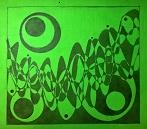Meet Tijana Medić, a woman from Banjaluka who is connecting interpreting, drawing, and math
Tijana’s drawings can also be found on the popular Bored Panda website.
MILICA PLAVŠIĆ / September 3, 2019
Banjaluka’s own Tijana Medić says that her main interest had always been in visual arts, but that in 1992 (just before the war started), when she graduated from Grammar School in Banjaluka, art did not seem like a wise choice of an occupation. Instead, she enrolled into a “technical” university school, and so she graduated with a bachelor degree in mathematics and computer science at the School of Natural Sciences and Mathematics with the University in Belgrade, with a high grade point average, which got her into the position of an assistant lecturer at the Banjaluka University School of Natural Sciences and Mathematics.
However, just before the end of her bachelor studies, she started working as an interpreter and translator, initially thinking that it would be just a temporary gig to earn the money she needed to move abroad. Soon it became clear to her that she found herself in interpreting in a way she never recognized working at the university, maths, and especially IT, as the right place for her.
She had balanced the two jobs for a while, but for more than 10 years now she has worked exclusively as a freelance interpreter and translator for English. She had learned English in school, along with music and films, but mostly through reading books in the American and British cultural centers, while studying in Belgrade.
She says that she could talk at length about how her mathematical education has affected both her work as an interpreter and her main hobby, drawing, which is what got her some attention on social media.
“One of the courses I was teaching at the University concerned artificial languages and their interpretation and compiling, and a lot of insights from that theory can be used to train one’s brain to translate more efficiently from one living language to another. When it comes to drawing portraits that really resemble their models, it is useful to have in-depth knowledge of angles, proportions, perspective, which I had acquired though geometry, as well as to be familiar with facial recognition algorithms, and my drawings are still dominated by spirals. I think that one actually cannot have a surplus of mathematics in one’s life, only a deficit.”
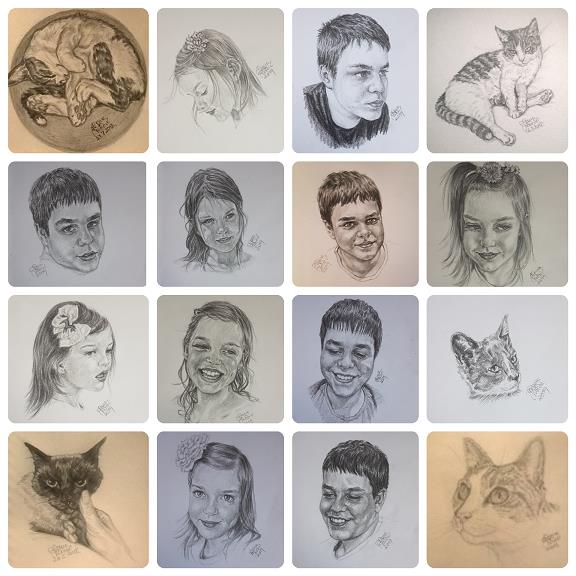
What is interesting is that many of Tijana’s drawings were drawn while she was interpreting during meetings, on her interpretation notes. Asked how it is possible to do two demanding tasks at the same time, and do them excellently, Tijana says that drawing and doodling had always helped her to concentrate on what she was listening to.
“I remember, from primary school, the principal visiting our class once, to tell us something very important, and I was doodling while she was telling us that important thing very importantly, so she scolded me for not paying attention, and I was, regardless of the doodling, or maybe because of it, able to repeat exactly what she was saying. My teachers and professors never minded me doodling while they were teaching – I think I was the least of their problems, or maybe they had had a chance to get to know me better and realize that the drawing was actually helping me focus. However, I also think that working in simultaneous translation for a longer period results in changes in one‘s brain. When one has to pay attention to both what one is listening to, and what one is speaking, with a certain delay in between, it feels like there are two separate channels that form in one’s brain, and then it becomes difficult to focus on one thing and one thing only, as both channels demand to be entertained – and I am not, for sure, the only example of that. Many colleagues do other things in their booths while they are interpreting – they read, or text, or surf the net, and I’ve even read about some of them solving crossword puzzles while interpreting at conferences.”
When she interprets consecutively, Tijana does not like to interrupt the speaker and instead prefers to remember and interpret longer portions of the speech. A speech being interpreted consecutively sounds better and is easier to listen to and understand when the speaker and the interpreter switch more frequently, but not all the speakers are open to making frequent breaks, so an interpreter has to know how to take notes.
“And then, as I already have a notebook and a pencil in my hand in order to take notes when I have to, I might as well draw and keep my hands busy when making notes is not necessary. The combination of interpreting and drawing is ideal, as one activity occupies my hearing and my speech apparatus, while the other occupies my eyes and my hands. I always ask my clients whether they mind me drawing during meetings, but none have answered that question affirmatively. Sometimes they want me to draw something during the meeting that is based on a photo they selected, so that they can bring a special souvenir home from Banjaluka.”
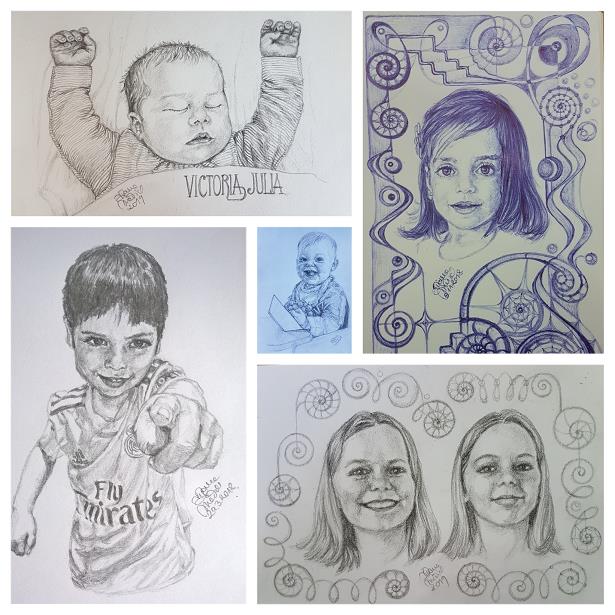
Tijana does not have any formal training in art.
“Two years ago an advertisement appeared on my Facebook feed for a course in drawing, and I bought that course on an impulse, for 10 US dollars. It is a course on udemy.com on drawing for beginners. I think one can graduate from that course within a week, at normal pace, and it includes lectures in the form of videos, and one should draw along with the tutor, and then practice on one’s own, after which the tutor assesses the pupil’s work on the Q&A section. One also gets to access a closed Facebook group for beginners in drawing. Being a procrastinator that I am, it took me six months to graduate from the course. I would go through one lesson and then not do anything for a couple of months. However, when I finally got to the part of course that concerns portrait drawing, I recognized that it fit perfectly into what was my ‘style’ at the time – abstract spiral doodles that resembled frames. The portraits fit perfectly into the frames. That is how I got to my first article on Bored Panda – I turn my interpretation notes into drawings of cats.
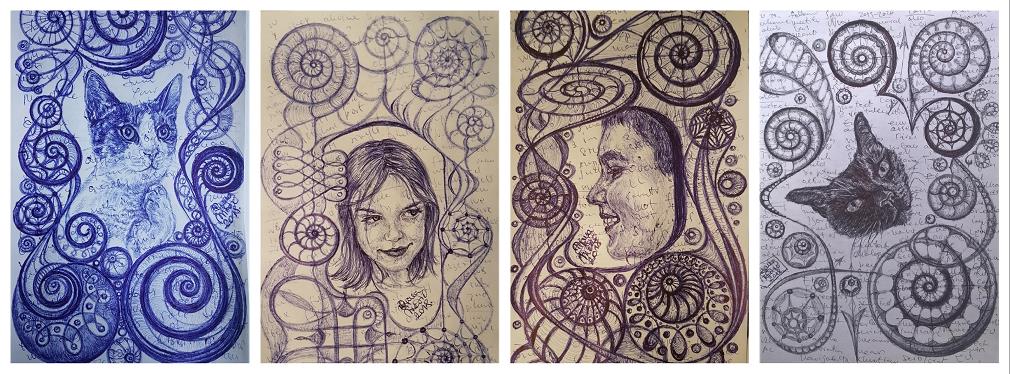
Since 2017, she has been drawing almost every day, mostly portraits, and by now she has drawn more than 700 of them. She mostly uses a plain ballpoint pen, graphite pencils, or coloured pencils.
“Just two or three pencils, an eraser, and a plain notebook, things I can always carry around with me, and hours spent at work – or wherever I have to be – can seem like minutes, once I get in the zone.”
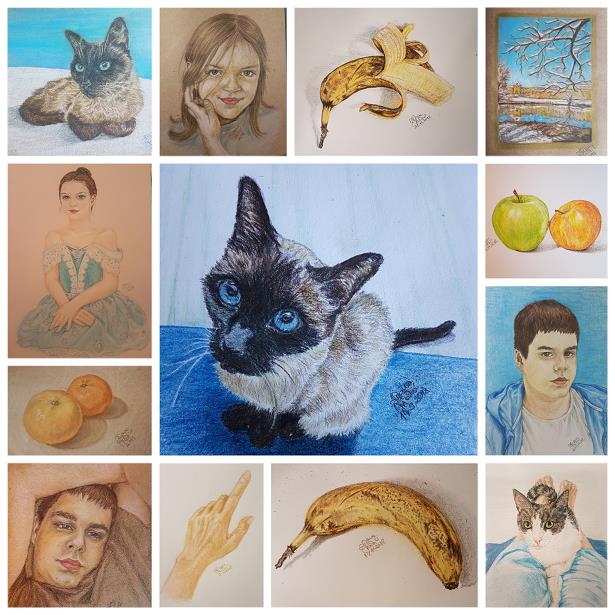
Speaking of her models and motives that inspire her, Tijana says she is inspired by people. her family and friends.
“From the very beginning I liked the way people reacted to a portrait drawn on the basis of their photograph, which they get as a surprise gift. Even my initial attempts, which really neither were too good, nor had much resemblance to the people they should have depicted, and which were certainly not at all flattering, were received with so much positive energy and gratitude – I am indeed fortunate to have such great friends. That is why I love to photograph my models at the moment in which they receive their portraits, and those reaction photographs are the most important part of my website and the best part of my Instagram. Then, of course, that photograph can also become the basis for the next portrait, and so I have made a series of portraits in portraits. In one case, I got to the fifth level of recursion, which is something that is very entertaining for the mathematical part of my brain. That is the topic of my second article, Recursive portraits of my friend.”
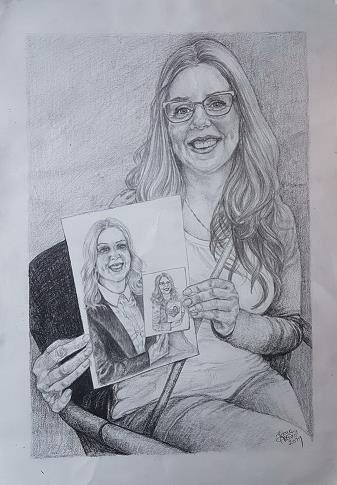
Her plan is to draw all of her Facebook friends, on their birthdays.
“As if out of spite, there are days on which as many as three have a birthday, and on other days no one has a birthday, so it will not be possible to implement this plan within a single year. Drawing has really given me an insight into what all those social networks are really for – that is, for what they should be used. I’ve been on Facebook for more than a decade and I used to think that the only purpose of that is to make one’s high school graduation anniversaries less surprising. But now, starting from the initial group for the drawing course, I got connected to people with whom I really share interests and who help me with my drawing and inspire me in unexpected ways. So that even those I will never meet in real life deserve to have a portrait on their birthday, for sure. Also, a birthday portrait is also definitely deserved by those who celebrate their birthdays in real life, and invite me to their party! Just like I can draw while I translate, I can also draw while I am talking to my friends and having a laugh with them – and I can certainly draw even better while I am eating and drinking! There were also portraits for the Family Saint’s Day celebrations and other occasions. And when there are no special occasions to celebrate, there is always my family and the thousands of photographs of our life together that I have taken and that I keep on taking every day.”
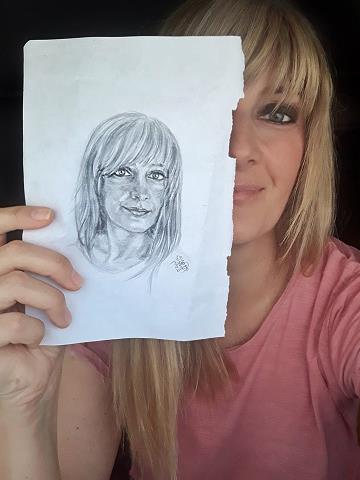
She often draws cats, and she says that they are “fully fledged members of her family”.
“Cats rightfully rule the Internet. They are so flexible, relaxed, elegant, and their furry faces are incredibly expressive. That makes them ideal models. I have just adopted a new kitten, and coincidentally he is grey and white, as if he were born for graphite pencil drawings! One can make portraits of cats just like of people, in different moods, and they can also stay in one place for a few hours, while they nap, and they make it possible for me to practice drawing live models, instead of just drawing on the basis of reference photographs. I have not had any luck with people on that front, nobody is patient enough to pose for me and they squirm too much while they sleep.”
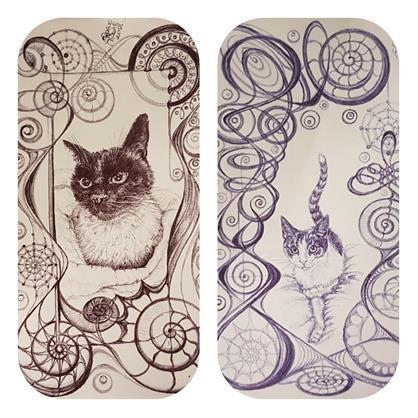
Drawings of spirally relaxed cats, in ballpoint pen
Tijana says that she is fascinated by social networks, and that she finds it interesting in how many different ways one can become popular on them. That was the origin of her series of portraits of Instagram influencers (who are mostly animals): Inspirational animals.
For now, drawing is just a hobby for her, but asked about her wishes and ambitions, Tijana says:
“I wish I could put up a stand on a
city square and draw portraits of tourists, as well as, of course, people of
Banjaluka. Some of my fellow artists and friends have asked me to show them my
drawing process and so I started a Youtube channel, Portraits
by Tijana, on which you will be able to draw
with me. I am afraid that a career in art requires creating something shocking
and scandalous and that smiling people and relaxed cats are not going to lead
me in that direction. Maybe I’m wrong, but I also like interpreting too much.”
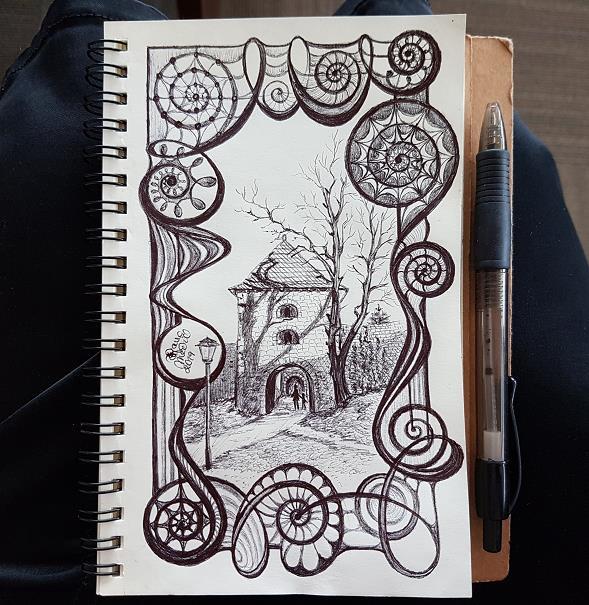
K
